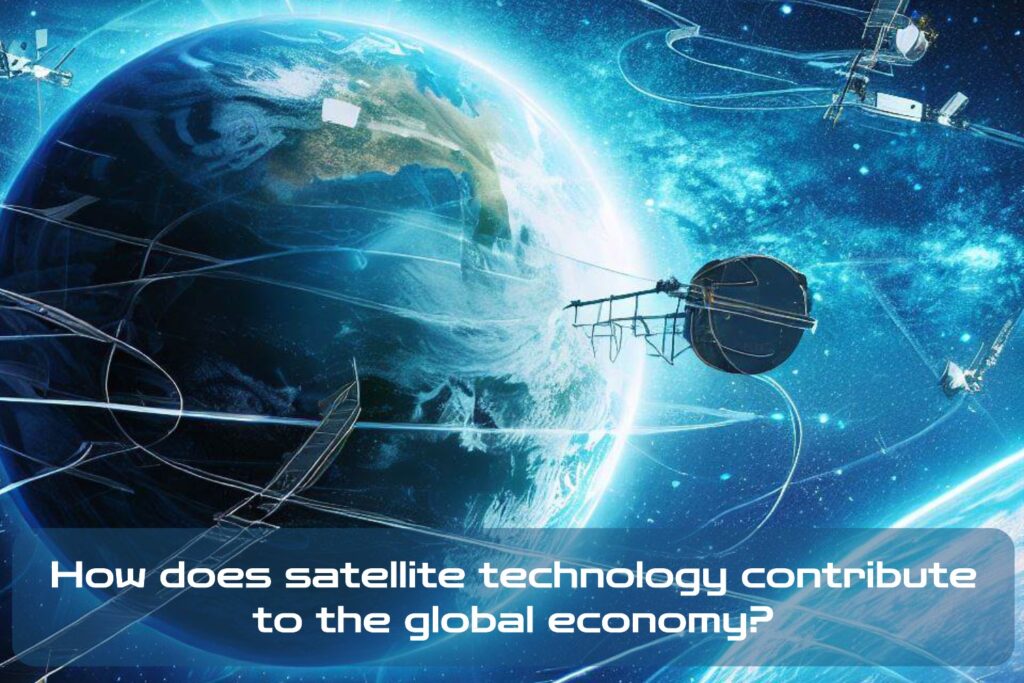The Power of Satellites: How They Contribute to the Global Economy
Satellites are no longer a thing of science fiction; they have become an integral part of our daily lives. From communication to navigation and research, satellite technology has revolutionized the way we work and live.
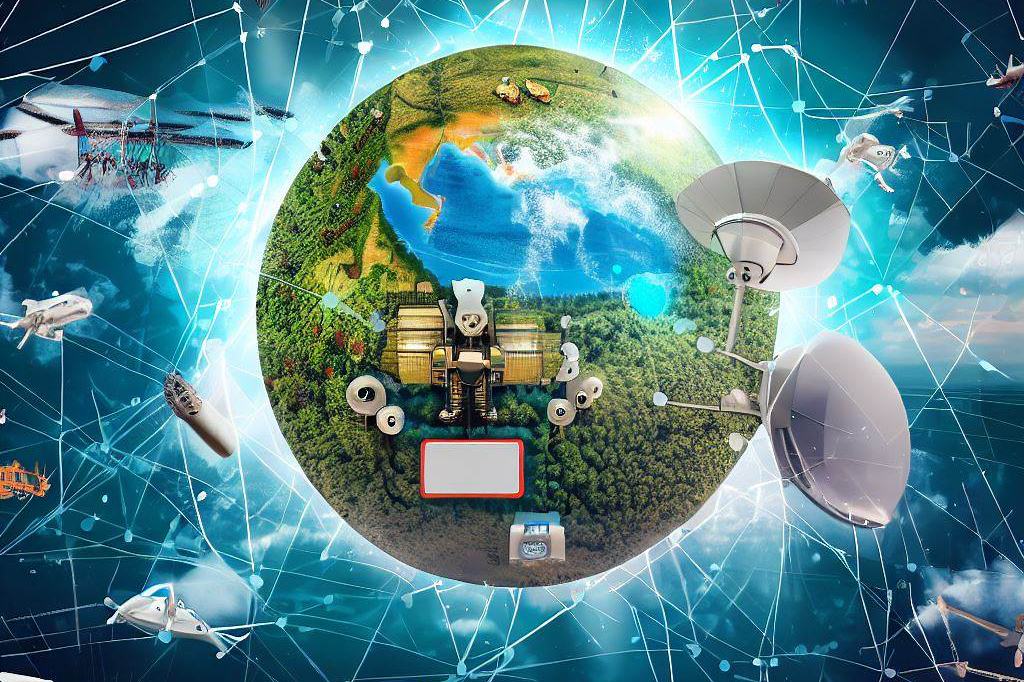
And with the global economy becoming increasingly connected, satellites have become essential for conducting international commerce and trade. In this article, we will discuss how satellite technology contributes to the global economy across various industries.
Satellite Communication: Connecting the World
One of the most significant contributions of satellite technology to the global economy is its role in connecting businesses and individuals across the world. With millions of people communicating with each other every day through phones, the internet, or video conferencing, satellite communication has become vital for keeping us all connected. Satellite communication provides reliable access to voice and data services in remote areas where traditional land-based networks cannot reach them.
It is essential for conducting business across borders and facilitating trade between countries. It also enables disaster management agencies to communicate during times of natural disasters when terrestrial communication infrastructure may be damaged or disrupted.
Moreover, satellite communication plays a crucial role in providing internet connectivity to places where it would otherwise be challenging or impossible due to geographical barriers. Access to high-speed internet is critical for economic growth as it allows businesses in remote or rural areas to participate in the global economy on an equal footing.
Satellite Navigation: Helping Industries Stay on Track
Satellite navigation systems like GPS have become synonymous with getting from point A to point B; however, their impact on industries like transportation, logistics, and supply chain management goes far beyond that. GPS has revolutionized transportation by providing real-time tracking information that helps improve route planning while reducing fuel consumption and carbon emissions. Logistics companies can now track shipments from start to finish using GPS-enabled devices, which ensures safe delivery while minimizing transit time and cost.
Satellite navigation also plays a critical role in the maritime industry, where it helps improve vessel safety by providing accurate positioning, weather forecasting, and oceanographic data. It is also essential for search and rescue operations during emergencies at sea.
Remote Sensing: Providing Insights That Drive Innovation
Satellites are used to gather information about the Earth’s surface, atmosphere, and oceans through remote sensing. Remote sensing data has become a valuable resource for industries such as agriculture, mining, oil & gas exploration, and environmental monitoring.
By analyzing satellite imagery and other remote sensing data sets, farmers can make informed decisions about crop management that can increase yield while reducing inputs like water or fertilizers. The mining industry uses remote sensing to explore new mineral deposits while assessing environmental impacts.
Satellite technology has played an essential role in oil and gas exploration by enabling companies to detect underground reservoirs with greater accuracy while reducing exploration costs. Moreover, satellite-based monitoring systems help identify environmental hazards that could impact ecosystems or human health.
The power of satellites is undeniable; they have become an essential part of our lives and play a significant role in driving economic growth across various industries.
The World is Our Oyster: Satellite Communication and its Role in Global Connectivity
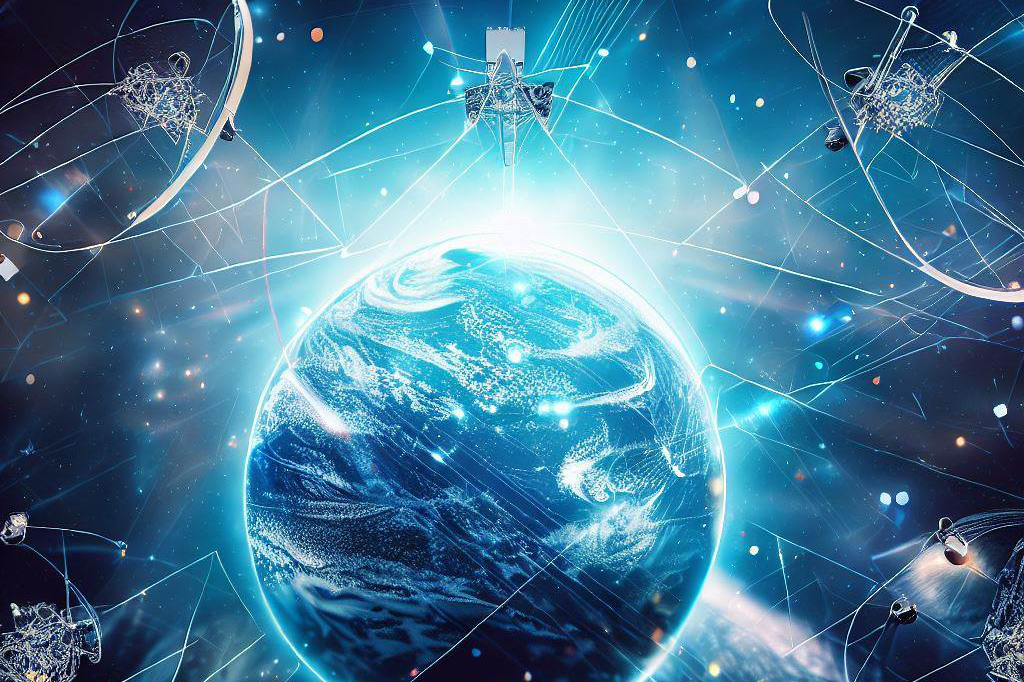
Satellite communication has revolutionized the way people connect with each other, wherever they are in the world. With just a small dish and a receiver, anyone can communicate with someone else across the globe. This technology has brought businesses closer, facilitated international trade, and allowed individuals to stay in touch with loved ones despite vast geographical distances.
One of the most significant benefits of satellite communication is its ability to provide reliable connectivity. Traditional communication methods like telephone lines or cables can be easily disrupted by natural disasters or other emergencies.
In contrast, satellite technology can remain operational even in these extreme situations, making it an essential tool for emergency responders and relief organizations. International trade relies heavily on satellite communication as it enables businesses to communicate across borders without any barriers.
High-speed internet connections provided by satellites allow companies to transmit data quickly and efficiently, increasing productivity and reducing costs. The global economy thrives on this real-time connection between manufacturers, suppliers, distributors, and customers from anywhere around the world.
Breaking Down Barriers: The Importance of Reliable Communication for International Trade and Commerce
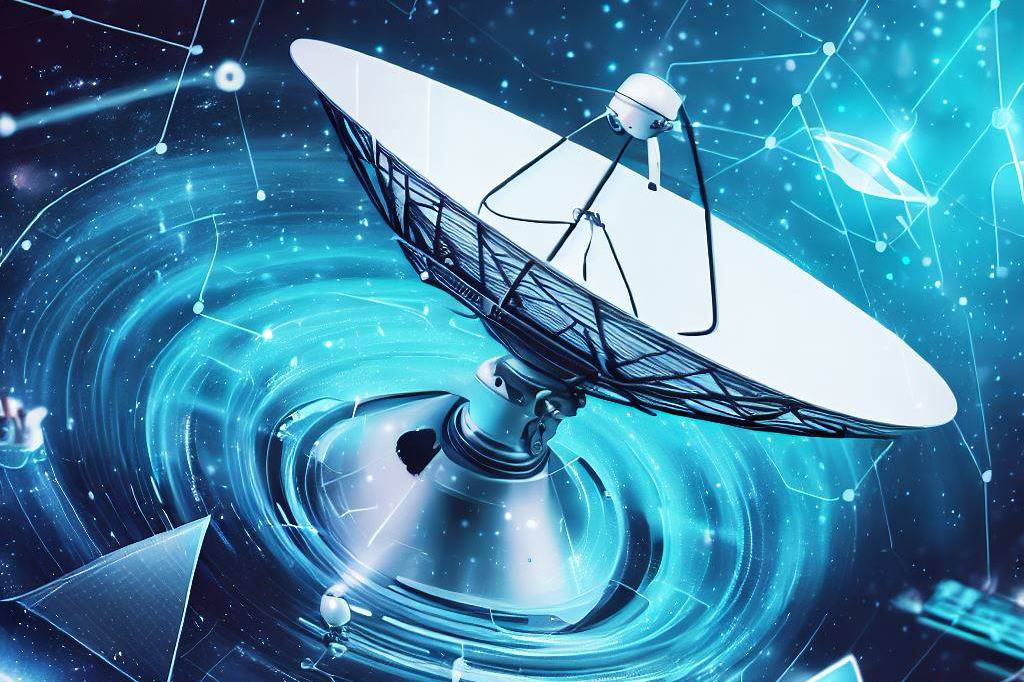
The importance of reliable communication cannot be overstated when it comes to international trade and commerce. Without reliable systems in place for communicating orders, receiving payments, or managing supply chains, global business would come to a grinding halt. In addition to providing fast communications links across borders that support international supply chain management; satellite communications help keep logistics services operating efficiently by enabling fast delivery times for goods moving between countries.
This means that businesses can meet tight deadlines even if they are located thousands of miles away from their customers or suppliers. Satellite communication has also transformed the way we work remotely as telecommuting becomes an increasingly popular trend among professionals worldwide.
With high-speed connections provided by satellites, anyone can work from (pretty much) anywhere in the world without having to travel; cutting travel time and costs, reducing carbon footprints, and increasing productivity. Satellite communication has revolutionized the way we communicate with each other in a globalized world.
It has broken down barriers to communication, made international trade more accessible, and facilitated the exchange of ideas and information across borders. Without this technology, our world would be a much smaller place with fewer opportunities for growth and prosperity.
Navigation: Exploring the World with Satellites

Satellite navigation systems, like GPS, have revolutionized the way we travel and navigate our world. These technologies allow us to pinpoint our exact location with an accuracy never before possible.
GPS technology is widely used in smartphones, cars, airplanes, and even ships to guide us along our journeys. In addition to personal use, satellite navigation has also had a significant impact on transportation, logistics, and supply chain management across various industries.
For example, the shipping industry relies heavily on GPS technology to track cargo ships and ensure timely delivery of goods across continents. But it’s not just shipping that benefits from satellite navigation.
The aviation industry is another sector that has seen significant improvements with the use of satellite navigation systems. With GPS technology guiding pilots during takeoff and landing procedures, air traffic control can manage aircraft traffic more efficiently while reducing flight delays.
The trucking industry is yet another example where GPS has had a major impact. With real-time tracking of vehicles through GPS-enabled devices installed inside trucks and trailers, companies can manage their fleets more effectively by monitoring driver behavior and optimizing routes for efficiency.
Industries Relying Heavily on Satellite Navigation Technology
While transportation is one area where satellite navigation technology has been critical, there are many other industries that rely heavily on this technology as well. Construction companies rely on GPS for accurate land surveying measurements that help them design their projects in a precise manner.
Mining companies also use this technology to locate minerals with greater accuracy than ever before possible. Agriculture is yet another sector where satellite navigation plays an important role.
Farmers use this technology to map out their fields accurately and plan irrigation schedules based on soil moisture levels. This allows them to optimize crop yields while minimizing water usage.
It’s clear that satellite navigation systems have changed how we view our world today—not just for travelers but for businesses as well. With GPS technology being a key player in various industries, we can expect to see continued innovation and advancements in how we navigate our world in the future.
Remote Sensing
Gathering Information About the Earth’s Surface, Atmosphere, and Oceans

Satellites are valuable tools for gathering information about the Earth’s surface, atmosphere, and oceans. Remote sensing technology allows us to obtain data about the planet without physically being there. Satellites can take high-resolution images of the Earth’s surface using cameras and sensors that detect different types of radiation.
These images can be used to create maps and monitor changes in land use, urbanization, crop health, and natural disasters. Furthermore, remote sensing satellites can also collect data on the planet’s atmosphere and oceans.
This includes monitoring air pollution levels, tracking weather patterns such as hurricanes or typhoons, analyzing ocean currents and temperatures to predict El Nino Southern Oscillation (ENSO) events. Scientists use this information to better understand climate change processes.
The Various Applications of Remote Sensing Data in Industries such as Agriculture, Mining, Oil & Gas Exploration and Environmental Monitoring
The applications of remote sensing data are vast across industries such as agriculture, mining oil & gas exploration environmental monitoring etc. In agriculture industry remote sensing enables farmers to closely monitor their crops by providing them with precise information about soil moisture levels vegetation health or crop stress which is very helpful for efficient use of water resources fertilizers pesticides etc.
Mining companies can use remote sensing technology to identify mineral deposits that may not have been visible from the surface earlier. It also helps in monitoring environmental impacts of mining activities like soil erosion water quality vegetation damage etc.
Oil & gas exploration companies rely heavily on remote sensing technology for mapping offshore oil reserves locating shale gas deposits identifying leaks in pipelines observing seismic activity offshore where drilling is taking place for safety reasons etc. Environmental agencies often utilize these same technologies when studying everything from global warming patterns to air pollution distribution all around the world, which helps policymakers make better informed decisions about how to address climate change.
Overall, remote sensing technology is a powerful tool that has become essential for so many industries and applications. It is poised to become even more important in the years to come as we continue to learn more about our planet and find new ways to use this information.
The Final Frontier: Space Exploration & Research
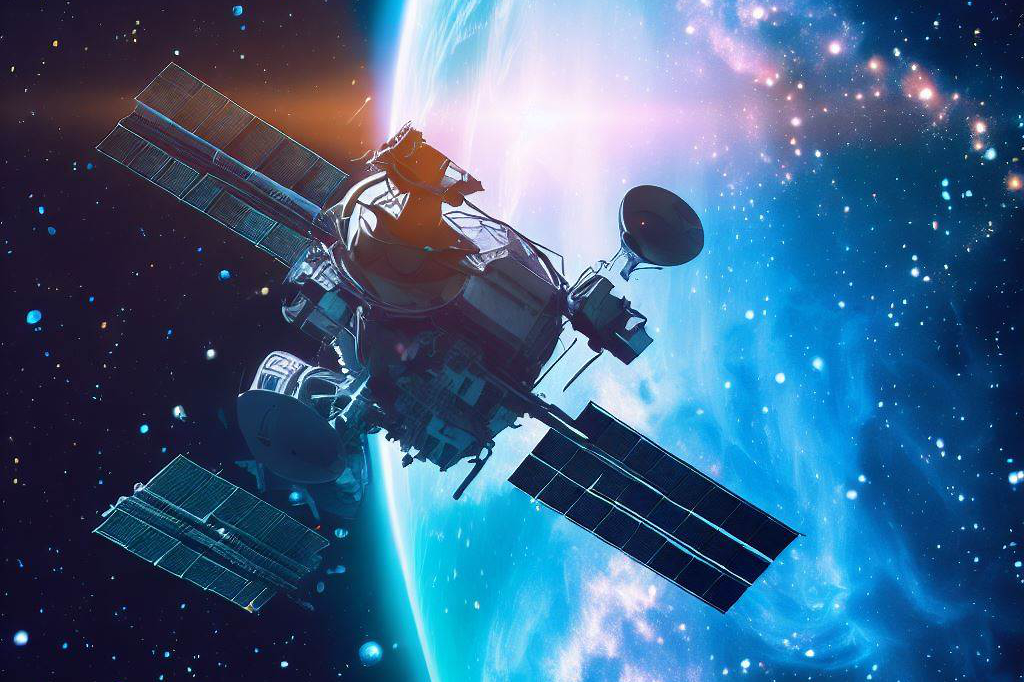
The Role of Satellites in Space Exploration Missions
Satellites have played a crucial role in space exploration missions conducted by both government agencies like NASA and private companies like SpaceX. These satellites are used to gather information about planets, asteroids, and other celestial bodies that are often too far away or too difficult to reach with traditional spacecraft. NASA’s Mars Reconnaissance Orbiter, for example, uses a suite of scientific instruments to study the geology, climate, and atmosphere of Mars.
The orbiter also acts as a communication relay for rovers like Curiosity and Perseverance that are exploring the Martian surface. Similarly, SpaceX’s Starlink constellation is designed to provide high-speed internet access to remote and rural areas on Earth, but it could also be used to provide connectivity for future lunar colonies or other space-based missions.
How Satellites Contribute to Scientific Research
Satellite technology is also extensively used in scientific research in fields such as astronomy, meteorology, and climate science. In astronomy, telescopes like the Hubble Space Telescope use advanced imaging technologies to capture stunning images of distant galaxies and stars.
In meteorology, weather satellites play a critical role in predicting weather patterns and providing early warnings for severe storms and natural disasters. The GOES-R series of geostationary weather satellites operated by NOAA provides real-time images of hurricanes and other weather events that help emergency responders prepare for potential impacts.
Satellite data is also extensively used in climate science research. Satellites can measure various parameters such as temperature, precipitation levels, vegetation cover, etc., which can be analyzed over time to identify trends related to global warming or other environmental factors impacting our planet.
Final Thoughts
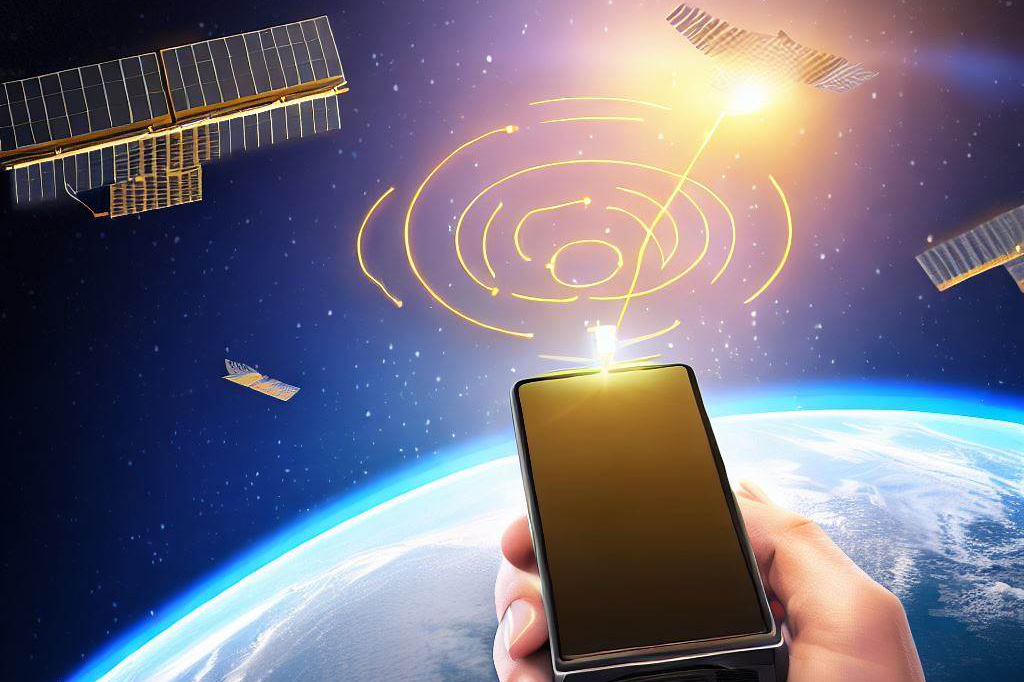
Satellite technology has been a game-changer for the global economy across various industries. Communication, navigation, remote sensing, space exploration, and research have all benefited from the advancements made in this field.
The ability to communicate via satellite has revolutionized international trade and commerce. Reliable communication is essential to any successful business transaction, and satellite technology has made it possible for businesses to connect with each other and with customers all around the world in real-time.
Satellite navigation systems like GPS have transformed the transportation and logistics industries. Now, ships can navigate through treacherous waters with greater precision, while planes can land safely even during adverse weather conditions.
These improvements lead to faster delivery times and reduced transportation costs, which ultimately enhance customer satisfaction. The applications of remote sensing data gathered by satellites are numerous; from monitoring crops to detecting oil deposits to predicting natural disasters such as hurricanes or tsunamis – this technology provides valuable insights that enable better decision-making across multiple industries.
In the future, we can expect continued innovation in this field, with new uses for satellite technology emerging regularly. There is enormous potential for growth as more countries invest in space exploration programs and private companies continue their efforts to improve existing technologies or develop novel ones!
We can only imagine what amazing things will be possible with the next generation of satellites. One thing remains certain: the impact of satellite technology on our global economy will continue to be significant for years to come!
FAQ: How Satellite Technology Contributes to the Global Economy
1. What is satellite technology and how does it work?
– Satellite technology involves the use of artificial satellites in space to provide various services and functions. Satellites are launched into orbit around the Earth and communicate with ground-based stations using radio signals. They transmit and receive data, enabling global connectivity and supporting a wide range of applications.
2. How does satellite technology impact global communication?
– Satellite technology plays a crucial role in global communication by providing reliable and widespread connectivity. Satellites facilitate long-distance communication, allowing people around the world to communicate via phone calls, video conferences, and internet services. This seamless communication capability supports international business transactions, collaboration, and information exchange.
3. What are the economic benefits of satellite technology?
– Satellite technology brings significant economic benefits to various industries and sectors. It enables global trade and commerce by providing reliable communication and data transmission capabilities. Businesses can expand their reach and access new markets, leading to increased trade opportunities and economic growth. Moreover, satellite technology also supports industries such as broadcasting, navigation, and weather forecasting, which further contribute to the global economy.
4. How does satellite technology enhance transportation and logistics?
– Satellite technology plays a crucial role in transportation and logistics by providing accurate navigation systems and efficient tracking capabilities. Satellites enable precise positioning and real-time tracking of vehicles, ships, and aircraft, ensuring efficient transportation routes and improving logistics operations. This leads to reduced costs, optimized supply chains, and improved overall efficiency in the transportation industry.
5. How does satellite technology contribute to the financial sector?
– Satellite technology has a significant impact on the financial sector by enabling secure and efficient communication networks. Financial institutions rely on satellite technology for secure data transmission, remote banking services, and global connectivity. This ensures seamless transactions, reliable access to financial services, and enhanced cybersecurity measures, which are crucial for the smooth functioning of the global financial system.
6. In what ways does satellite technology support disaster management?
– Satellite technology plays a vital role in disaster management and emergency response. Satellites provide valuable information about natural disasters such as hurricanes, earthquakes, and floods. This data helps in early detection, monitoring, and prediction of disasters, allowing authorities to issue timely warnings and evacuate affected areas. Satellite technology also assists in coordinating rescue and relief operations by providing real-time situational awareness and communication capabilities.
7. How does satellite technology contribute to the energy sector?
– Satellite technology contributes to the energy sector in various ways. It supports the exploration and monitoring of energy resources, such as oil and gas reserves. Satellites provide valuable data on resource locations, availability, and extraction methods, aiding in efficient energy production. Additionally, satellite technology helps in monitoring power transmission lines, optimizing energy distribution, and promoting renewable energy initiatives.
8. What role does satellite technology play in agriculture?
– Satellite technology revolutionizes the agriculture sector by providing valuable insights and monitoring capabilities. Satellites can collect data on crop health, soil moisture levels, and weather patterns, enabling farmers to make informed decisions about irrigation, fertilization, and pest control. This leads to improved crop yields, reduced resource wastage, and increased sustainability in agricultural practices.
9. How does satellite technology contribute to scientific research and exploration?
– Satellite technology plays a vital role in scientific research and exploration. Satellites equipped with advanced sensors and imaging technologies enable scientists to study the Earth’s atmosphere, climate patterns, and natural resources. They also support space exploration missions by providing communication and navigation systems for spacecraft, facilitating human space exploration and the study of celestial bodies.
10. What are the future prospects of satellite technology in the global economy?
– The future of satellite technology looks promising in the global economy. Advancements in technology, such as smaller and more capable satellites, lower launch costs, and improved data processing techniques, will continue to expand the applications and benefits of satellite technology. From enabling global internet access to supporting emerging industries like autonomous vehicles and Internet of Things (IoT), satellites will play a crucial role in driving economic growth and innovation in the years to come.
TL;DR…
– 💡 Satellite technology plays a crucial role in the global economy by enabling various industries and sectors.
– 🌐 It provides global connectivity, supporting communication, data transmission, and collaboration across borders.
– 🚀 Satellite technology benefits sectors like telecommunications, agriculture, transportation, energy, finance, healthcare, and environmental monitoring.
– 📶 It enhances communication, navigation, weather forecasting, and remote sensing capabilities.
– 🌍 Satellite technology fosters economic growth, innovation, and improved quality of life globally.

C M, a seasoned editor, journalist, and consultant, is deeply fascinated by the convergence of technology, space, and the future of humanity.
With a particular interest in transhumanity, futurology, and the philosophical and ethical dimensions of these domains, C M serves as the lead contributor to SpaceSpotlight and TranscendSphere.
When not penning insightful articles on these rapidly evolving fields, C M indulges in their love for podcasts and books, proudly embracing their status as a ‘Happy Nerd Extraordinaire!’
